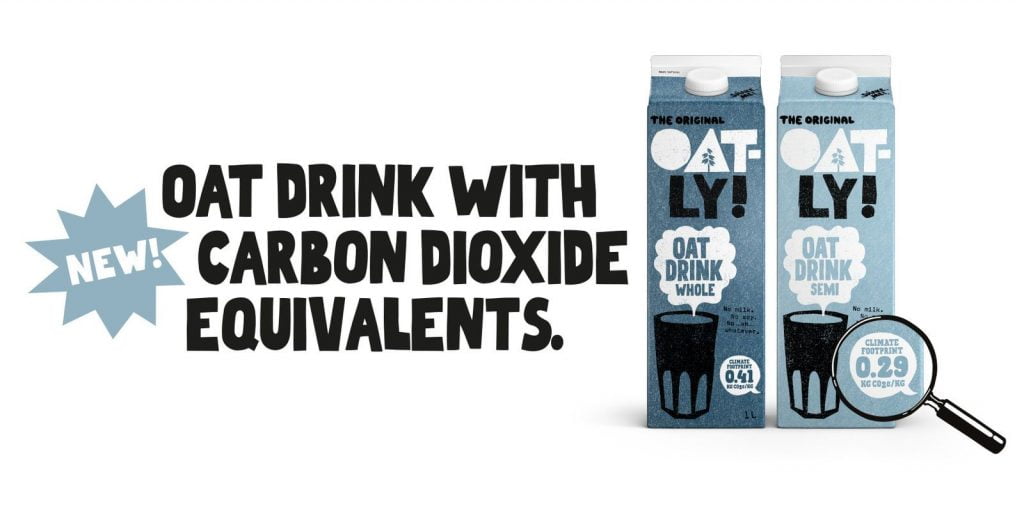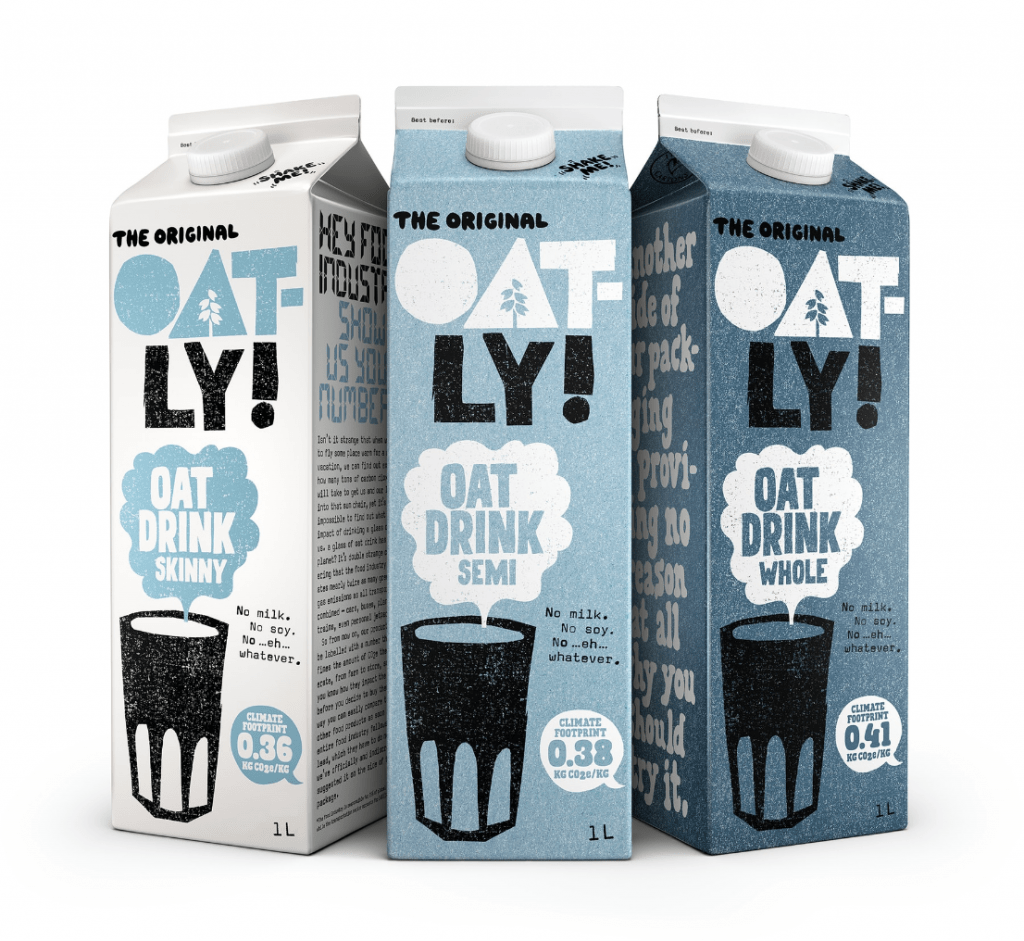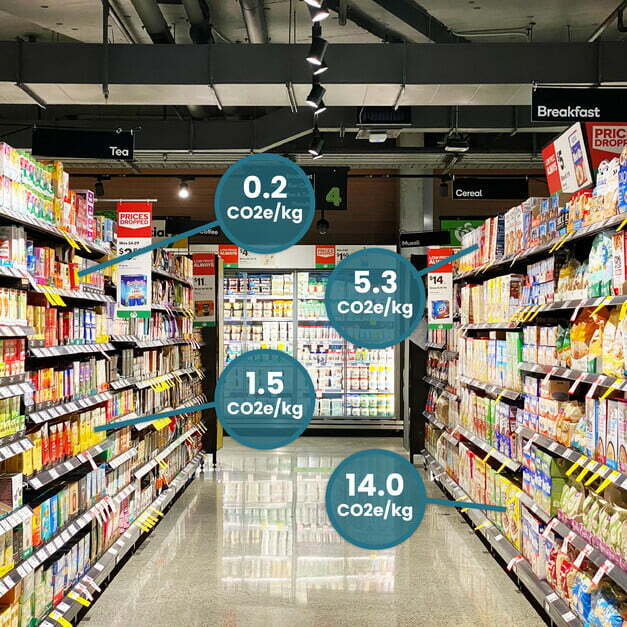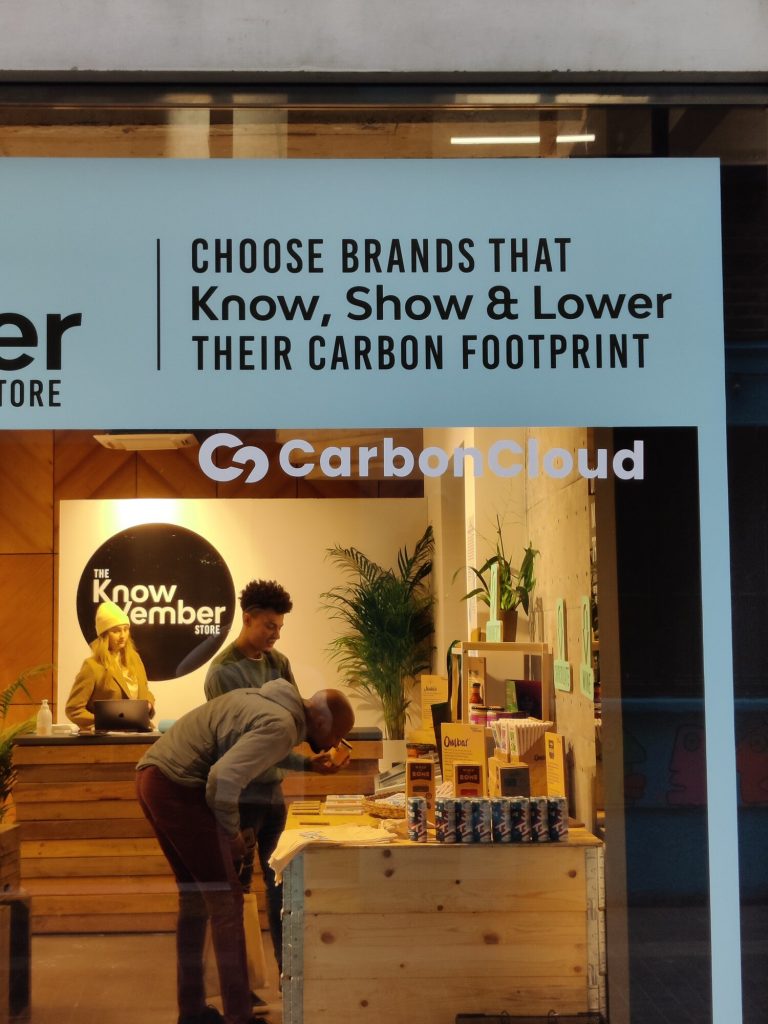Hey Oatly – Show us your climate strategy!
Oatly is a global inspiration regarding its climate strategy and communication. Since its initial boom, Oatly made noise challenging the entire food industry to show their numbers – and you may imagine which numbers they are referring to: Climate Footprints. Presently, Oatly is a challenger turned trendsetter and no one in the food industry is left wondering why – but many are wondering how. So, we asked!
We spoke with Annika Hansson, Sustainability Reporting Senior Manager at Oatly, to pick her brain, peek into Oatly’s vision and frankly, just fuse our inspiration.
For Oatly, sustainability is fundamental. They exist to drive the plant-based revolution – make shifting the scale towards a plant-based diet easy and delicious. Why? Because a shift to a plant-based diet will massively reduce the climate footprints from food! Annika explains that the easy way to do this is to simplify choosing plant-based alternatives; the extreme way is being left with no choice but to eliminate certain food categories altogether. So why not make this choice easier and transparent by making delicious products with a lesser impact on the planet?
Easier said than done! Annika hears you:

How can we impact consumers to drive the change? We wanted the consumers to understand the climate footprint of food and to make it easy to eat better and live healthier lives without recklessly taxing the planet’s resources in the process.
When we started, we did not know how to do it; we just needed to do it. That’s why we decided to calculate the climate footprint of our products and we found CarbonCloud – to focus on the number that drives this change.
Annika Hansson
Sustainability Reporting Senior Manager, OatlyAnnika thinks of climate footprints as another type of currency – a climate price. Consumers know everything about the monetary price of products and make choices based on their budget. Let us introduce… the climate budget: Groceries have a climate cost as well as a monetary cost. True to their values, Oatly took the road of transparency and decided to make the climate cost visible with the CarbonCloud label – for everyone.
Newsletter to-go?
Our special today is our Newsletter, including snackable tips, hearty climate knowledge, and digestible industry news delivered to your inbox
What’s in a number?
So, how do you understand what 1 is without knowing what 2 is, or 5? Where does 0.27 kg CO2e fall on the scale? This is where Annika turns her voice away from consumers and towards the food industry:
More food companies need to put equitable climate footprint labels on their products and then we can all build up awareness. The food industry accounts for approximately 25% of the global greenhouse emissions. If we can reduce that to 15% or 20% that would make a huge difference. But in order to do that, we need to help consumers make climate-smart choices. For me, printing the climate footprints of each product is the way of helping them and ourselves as food brands.
For Annika, this is not the only benefit. With more products having an equitably comparable climate footprint, food companies can benchmark their climate impact against other products or production processes and find ways to improve. Annika is quite keen on that herself:
When it comes to climate change, we’re all in the same boat. If someone else does something that yields a lower climate impact, I’m so interested to see what that is – we could also do the same thing to lower the climate impact.

Behind the scenes
Focusing on the climate footprint of a pack is the top of the figurative iceberg (we all work for the literal iceberg to keep existing). Annika walks us through how Oatly turns information from climate footprint analyses into business decisions that improve it.
We can compare products in different production sites and see that a product produced at site X has a bigger climate cost than the one at site Y, for example, because of the energy sources, the transportation, or the location.
Apart from aiming to climate-optimize their production process, Oatly is also on the way towards using climate footprint analyses in their sourcing strategies. The sustainability team compares the climate impact of supplied goods based on emission factors. Annika explains, ‘this is useful information internally. The team can show the changes in the overall climate footprint depending on the supplier and make the most climate-smart choice.’
No change without a challenge
Change is daunting for most but for Oatly, it is part of their DNA. The company was one of the first to embark on climate footprinting their products and they found challenges to rise to. Annika tells us:
In the beginning, it was all about collecting data: Where can we get the most, best, and most valid information? Then it became a question of how to explain to our customers why a product has a different number on the package than the one next to it on the shelf? Now the challenge is how to make our process even better – we want to improve our bookkeeping and our ability to trace back: We need to understand what we did two years ago, take this further internally and externally, to work with other stakeholders and continue to inspire the food industry to put the climate footprint on the pack.
A lively consumer response
Like everyone else in the food industry, we were very curious about the consumer response. Oatly has one of the most engaged communities of consumers with an immense interest of their own accord in climate change. As Annika explains, consumers were there to dig into the climate footprint numbers and ask questions. Engaging this community with truthful answers and building their trust and loyalty is part of Oatly’s success and, in itself is a climate win – it is this kind of community that helps drive real change and request the climate footprints of other food products too.
Annika also reveals two more drivers that propel Oatly to lead the change. Fearlessness and passion manifest in everything Oatly does – two invaluable attributes of true leaders.
We are quite fearless. We believe so much in this, so we just do it. We could of course have waited around for a standard but that is not us. To drive a change you need to act, you can’t just sit down waiting. We are also passionate about what we do. Working with sustainability is emotions; it is our lifestyle; it is a burning question for us. We are living our lives by this, it is what makes us go to work.
And henceforth, the consumers loudly and positively respond to the climate footprints, to fearlessness, to transparency – and so does the food industry. Is there a response missing before the revolution turns into a full-blown change? Annika names it: Legislation. Her message is loud and clear:
Please give us a standard so we can compare apples to apples. Make printing climate footprints mandatory on the packages like printing the nutritional labels; make sustainability reports mandatory for all companies – no matter where in the world they are.
We hear you, Annika, we cheer and support you, everyone at Oatly, and every single consumer who advocates for change. Let’s march!
This shan't take long...
Ready to get your products climate-labeled?
Reach out today and get your products climate-labeled in 4 weeks!
Related Posts
Asking for a friend: What does the climate footprint label mean?
You have labeled your product and your friend /customer /marketing manager tells you: This is such a great initiative! But… what does the climate footprint label mean? What is CO2e? And, how d
It is not about the label
For most, the first touchpoint with CarbonCloud is the climate footprint label. But we do not spend our waking hours providing a climate change participation trophy. We want to generate real change i
Climate footprint labels: Why we use the number – and why the entire food industry will too.
The quantitative and specific climate footprint label may still be perceived as disruptive but we are certain that there simply isn’t a way that is more informative and transparent to communicate th
The future of retail: The climate-transparent KnowVember store experience
Between November 2nd-6th the collective CarbonCloud heart was beating at the KnowVember pop-up store – the first climate-transparent store in the UK where consumers leave knowing the climate footpri







